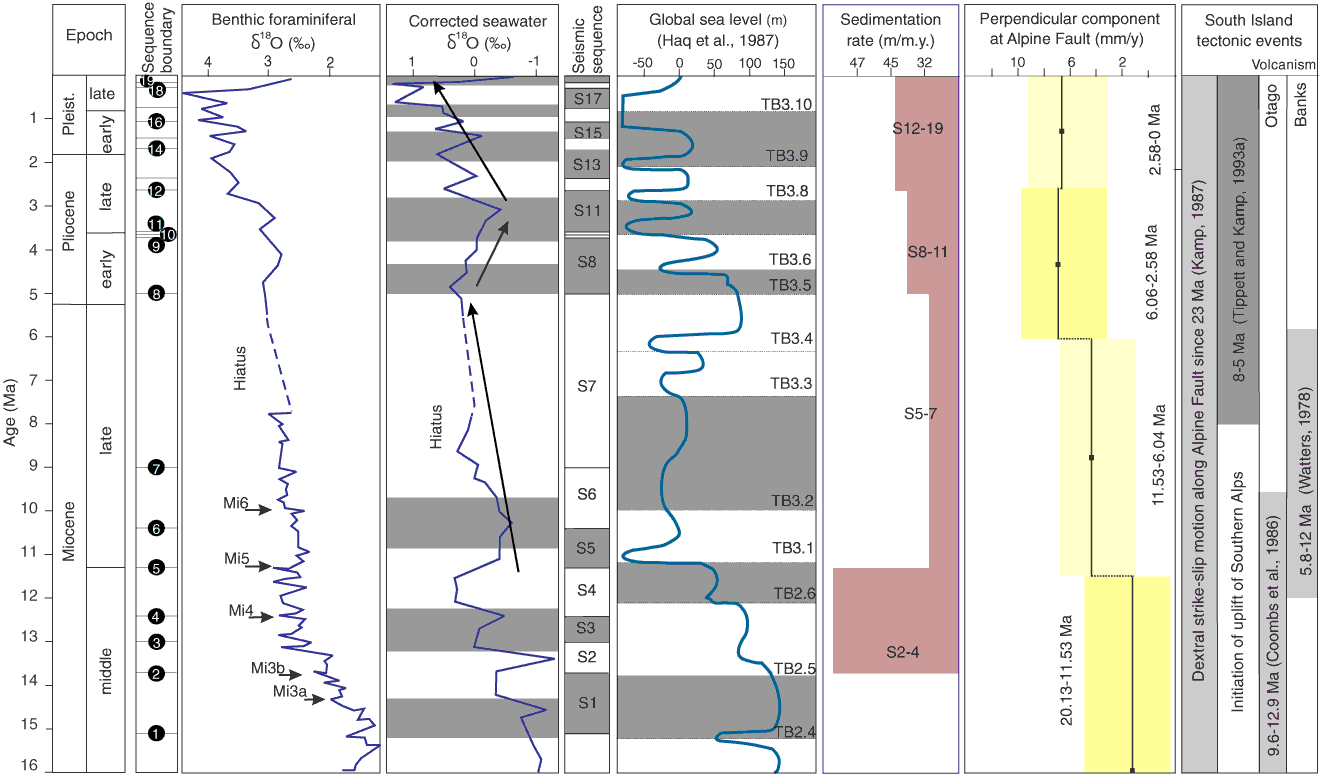
Figure F11. Predrilling age estimates of seismic sequence boundaries and tentative correlation with the oxygen isotopic record, sedimentation rates, and Alpine Fault convergence rates. Drilling results show that predrilling age estimates tend to be too old. Nevertheless, the tentative correlations remain valid. Two isotopic records are shown, both from Billups and Schrag (2002): (1) unmodified benthic foraminiferal δ18O record from ODP Site 747; (2) the same record corrected using Mg/Ca thermometry to remove the temperature effect and yield the δ18O of seawater (δ18Osw), predominantly a response to ice volume and therefore an enhanced proxy for global sea level. The δ18Osw record correlates better both with individual seismic sequences and longer term progradational and aggradational trends, as well as with the Haq et al. (1987) eustatic curve (also shown, recalibrated to the timescale of Berggren et al., 1995). This suggests eustatic control of sequence timing. Cooling Events Mi2, Mi3a, Mi3b, Mi4, and Mi5, derived from the oxygen isotope records from DSDP Site 608 and ODP Sites 703 and 704 (Miller et al., 1996) are shown. Average sedimentation rates are calculated from estimated sequence volumes. The perpendicular component of motion at the Alpine Fault plate boundary was calculated using the method of Cande and Stock (2004). Finite rotations for Australia–Pacific motion were determined for 4 chrons (2A, 2.58 Ma; 3A, 6.04 Ma; 5, 11.53 Ma; 6, 20.13 Ma; ages are those of Cande and Kent [1995]). The increase in both sedimentation and convergence rates over the last 5–8 m.y. correlates well. The early phase of high sedimentation rates (S2–S4) may reflect global processes. See text for further discussion. A summary of South Island tectonic and volcanic events is also shown.

Previous | Close | Next | Top of page